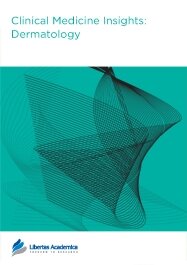

Publication Date: 05 Nov 2013
Type: Case report
Journal: Clinical Medicine Insights: Dermatology
Citation: Clinical Medicine Insights: Dermatology 2013:6 27-30
doi: 10.4137/CMD.S12697

Nevoid hyperkeratosis of the breast is a rare condition affecting the nipple, the areola, or both. Different therapeutic options have been used with varying results, but there is no uniformly effective treatment. We report a case of nevoid hyperkeratosis of the nipple in a woman presenting with thickening and hyperpigmentation of both nipples for 15 years. Histologic examination confirmed the diagnosis of nevoid hyperkeratosis. The patient was successfully managed by topical calcipotriol. Calcipotriol is an effective therapeutic option in nevoid hyperkeratosis of the nipple and shows rapid outcome.
PDF (2.26 MB PDF FORMAT)
RIS citation (ENDNOTE, REFERENCE MANAGER, PROCITE, REFWORKS)
BibTex citation (BIBDESK, LATEX)

I highly recommend publication in Libertas Academia journals. The entire submission, review and publication process for our article in Clinical Medicine Insights: Dermatology was easy and quick. The reviews were very professional and helpful and the publication fees were reasonable. We also appreciate that our article is available online free of charge to anyone interested in it.

All authors are surveyed after their articles are published. Authors are asked to rate their experience in a variety of areas, and their responses help us to monitor our performance. Presented here are their responses in some key areas. No 'poor' or 'very poor' responses were received; these are represented in the 'other' category.See Our Results
Copyright © 2014 Libertas Academica Ltd (except open access articles and accompanying metadata and supplementary files.)
Facebook Google+ Twitter
Pinterest Tumblr YouTube